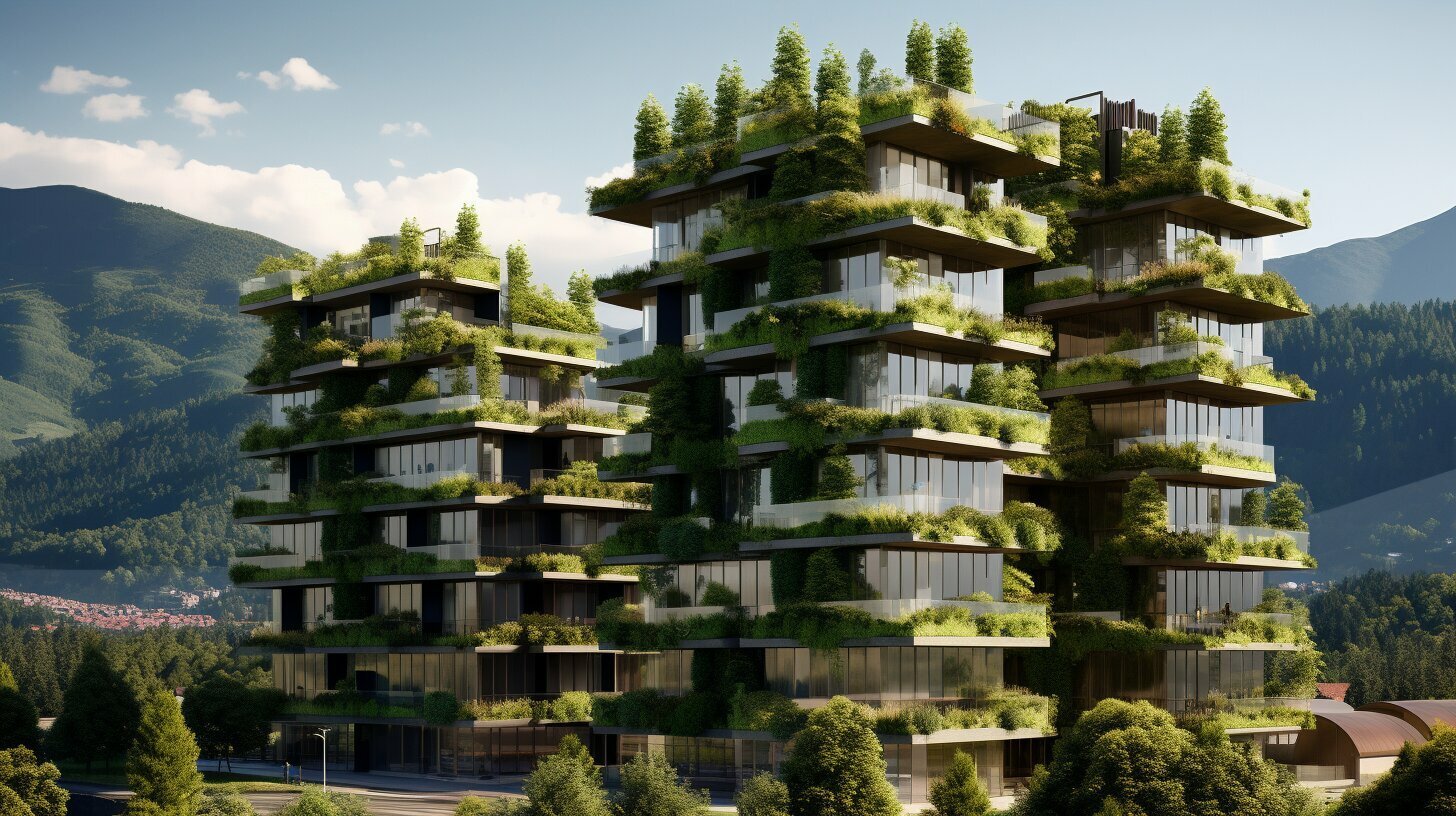Tajikistan Top Green Buildings
Welcome to our article series on Tajikistan’s top green buildings, where we explore the country’s commitment to sustainable architecture and eco-friendly construction. Despite being classified as a low-income economy, Tajikistan is striving to overcome its challenges and create a greener future for its citizens.
Tajikistan’s economy heavily relies on agriculture, which is facing threats from climate change. The country’s regulatory environment for investment poses challenges, ranking low in the World Bank’s Ease of Doing Business index. Furthermore, poor infrastructure hinders trade and exposes the population to risks.
In this series, we will delve into the impact of climate change, the challenges in the regulatory environment for investment, the state of Tajikistan’s infrastructure, and explore the country’s development strategies. Additionally, we will provide an overview of the impressive “National Unity Square” project by Lex Wizhevsky.
As we delve into the topic, we’ll examine Tajikistan’s efforts in energy efficiency and seismic safety in buildings, discussing ways to enhance energy efficiency and promote greener, sustainable designs.
Key Takeaways:
- Tajikistan faces challenges in its regulatory environment for investment and poor infrastructure.
- Climate change poses risks to Tajikistan’s predominantly agricultural economy.
- The “National Unity Square” project aims to attract tourism and investments to Tajikistan.
- Energy-efficient and earthquake-resistant building methods play a crucial role in sustainable architecture in Tajikistan.
- Tajikistan has an opportunity to enhance energy efficiency and promote greener building designs.
The Impact of Climate Change on Tajikistan’s Economy
Tajikistan has been significantly affected by climate change, resulting in various economic and environmental challenges. The country has experienced a 20% loss in glacier cover since 1950, leading to a decline in the availability of freshwater resources and affecting key sectors such as agriculture and hydropower generation.
The agricultural sector, which accounts for 21% of Tajikistan’s GDP, is particularly vulnerable to the impacts of climate change. Rising temperatures, changes in precipitation patterns, and increased frequency of extreme weather events pose significant threats to crop yields, livestock production, and overall food security in the country.
Furthermore, the warming climate also increases the risk of natural disasters such as floods and landslides, which can result in infrastructure damage, loss of lives, and disruption of economic activities. Deteriorating infrastructure assets further exacerbate the population’s exposure to these risks associated with extreme weather events and earthquakes, hindering sustainable development and economic growth.
“Climate change poses major threats to Tajikistan’s economy, particularly in the agricultural sector. The country needs to address these vulnerabilities and implement resilient strategies to safeguard its livelihoods and economic well-being.”
The consequences of climate change in Tajikistan require urgent attention and effective adaptation measures. By investing in climate-resilient infrastructure, promoting sustainable agricultural practices, and enhancing disaster risk management, Tajikistan can build a more resilient economy and mitigate the impacts of climate change on its vulnerable population.
Key Points:
- Tajikistan has lost 20% of its glacier cover since 1950.
- Rising temperatures and changing precipitation patterns pose threats to the agricultural sector.
- Deteriorating infrastructure assets increase the population’s exposure to risks associated with extreme weather events and earthquakes.
- Effective adaptation measures and resilient strategies are necessary to safeguard Tajikistan’s economy and livelihoods.
Challenges in the Regulatory Environment for Investment in Tajikistan
Tajikistan boasts a relatively well-developed regulatory framework for investment. However, the poor implementation of these regulations has resulted in an unpredictable and non-transparent environment for potential investors. As a result, Tajikistan finds itself ranking low in the World Bank’s Ease of Doing Business index.
The challenging regulatory environment in Tajikistan is compounded by a weak rule of law, corruption issues, and limited participation from the domestic private sector. These factors further deter and inhibit investment opportunities in the country.
Tajikistan’s debt levels have also seen an increase, largely driven by the government’s strategy to attract foreign direct investment. This strategy carries a high risk of debt stress, potentially impacting the stability and attractiveness of the investment landscape in Tajikistan.
“Investment in Tajikistan faces significant challenges due to the country’s regulatory environment. The lack of transparency and poor implementation hinder investor confidence, while corruption and limited private sector involvement further exacerbate the situation. These obstacles need to be addressed to attract sustainable investment and foster economic growth in the country.” – Tajikistan Investment Forum
Comparison of Ease of Doing Business Index Rankings
| Country | Ranking |
|---|---|
| Tajikistan | 145 |
| Kyrgyz Republic | 70 |
| Kazakhstan | 25 |
| Uzbekistan | 69 |
The table above highlights the stark contrast in ranking between Tajikistan and its neighboring countries based on the Ease of Doing Business index. Tajikistan’s low ranking indicates the need for significant improvement in its regulatory environment to attract investment and stimulate economic growth.
To address the challenges in the regulatory environment for investment, Tajikistan must prioritize the enhancement of transparency, strengthening the rule of law, combating corruption, and actively involving the domestic private sector. By creating an enabling environment for investors, Tajikistan can unlock its potential and become an attractive destination for investment.

Challenges in Tajikistan’s Infrastructure
Tajikistan’s infrastructure is a major hurdle to its economic growth and development. The poor state of infrastructure in the country has significant implications, including high trade costs and limited access to nearby markets.
The deteriorating Soviet-era assets further exacerbate the situation, exposing the population to increased risks from extreme weather events and earthquakes. The inadequate infrastructure leaves Tajikistan vulnerable and hampers efforts to improve its economic prospects.
In terms of energy infrastructure, Tajikistan faces significant challenges. While the country has achieved universal access to electricity, the systems function inefficiently due to poor quality infrastructure.
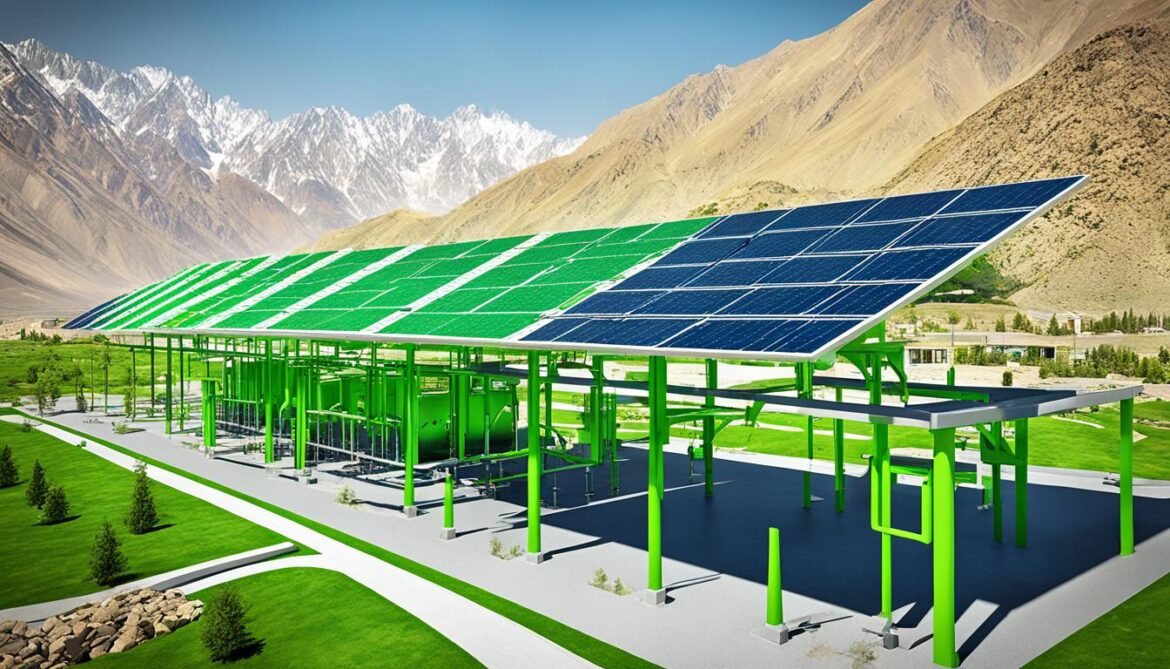
Tajikistan recognizes the need for improvement and is investing in the development of renewable energy sources, particularly hydropower and coal-fired power plants. These investments aim to enhance the country’s energy infrastructure and pave the way for a sustainable and reliable energy supply.
“The poor infrastructure in Tajikistan not only affects trade costs but also poses risks to the population. It is crucial for the country to invest in upgrading its infrastructure to ensure economic growth and improve the quality of life for its citizens.” – Tajikistan Infrastructure Development Report
Trade Costs in Tajikistan
The inadequate infrastructure in Tajikistan has significant implications for trade costs. The lack of proper transportation networks, including roads, railways, and ports, makes it challenging to transport goods efficiently and at a reasonable cost.
This hampers trade both domestically and internationally, limiting opportunities for economic growth and development. Higher trade costs make it difficult for Tajikistan to compete in the global market and attract foreign investment.
To address this issue, the government of Tajikistan is actively working on improving its transportation infrastructure, including road and railway networks, to reduce trade costs and enhance connectivity.
Energy Infrastructure Challenges
Tajikistan’s energy infrastructure is plagued by various challenges. The poor quality of infrastructure results in inefficient energy distribution and transmission, leading to power outages and reliability issues.
This not only affects the daily lives of citizens but also hampers industrial production and economic activities. To address these challenges, Tajikistan is focusing on developing its renewable energy sector, particularly hydropower. The country has significant hydropower potential, and harnessing this clean energy source will contribute to a more sustainable and reliable energy infrastructure.
The development of coal-fired power plants is also part of Tajikistan’s energy infrastructure plans, as these plants will provide a more stable and reliable energy supply.
| Challenges in Tajikistan’s Infrastructure | Solutions/Investments |
|---|---|
| Poor transportation infrastructure | Improvement and expansion of road and railway networks |
| Deteriorating Soviet-era assets | Renovation and modernization of infrastructure to mitigate risks |
| Inefficient energy infrastructure | Investment in renewable energy sources, particularly hydropower and coal-fired power plants |
Tajikistan’s Development Strategies
Tajikistan has put forward several development strategies to drive its progress towards sustainable development and economic growth. Two key strategies in place are the National Development Strategy for the period to 2030 and the Sustainable Development Transition Concept. These strategies provide a roadmap for Tajikistan to address critical challenges and leverage opportunities for social, environmental, and economic advancement.
The National Development Strategy for Tajikistan outlines the country’s long-term goals and objectives for a wide range of sectors, including infrastructure development, agriculture, education, healthcare, and social welfare. By setting clear targets and priorities, this strategy seeks to guide policy interventions and investments over the next decade to ensure inclusive and equitable development.
The Sustainable Development Transition Concept, on the other hand, focuses on guiding Tajikistan’s transition towards a more sustainable and environmentally conscious economy. This strategy emphasizes the importance of balancing economic growth with the preservation of natural resources, ecosystem resilience, and the reduction of greenhouse gas emissions. It aims to promote the incorporation of sustainable practices across sectors, ranging from energy and transportation to waste management and agriculture.
While Tajikistan has made commendable progress with these development strategies, there are still areas for improvement. One notable gap is the absence of a mid-century strategy that would allow for better benchmarking and alignment of shorter-term plans and programs. Such a strategy would provide a comprehensive vision and direction for Tajikistan’s long-term sustainable development efforts.
Additionally, Tajikistan needs to enhance its policy-making process to better account for environmental concerns and integrate them into decision-making frameworks. It is essential to ensure that investments and development projects are evaluated against national development objectives and environmental sustainability goals. This will help foster a more harmonious relationship between economic growth and environmental stewardship.
Overview of the “National Unity Square” Project
The “National Unity Square” project, designed by Lex Wizhevsky, is a remarkable architectural endeavor in Tajikistan. Serving as a cultural and business center, this project symbolizes the state emblem of the country and aims to attract tourism and investments to Tajikistan. It encompasses a range of impressive structures, including:
- A towering skyscraper known as “Samani Tower,” which adds a striking element to the city’s skyline.
- A modern hotel and business complex, providing luxurious accommodation options for visitors and fostering commercial activities.
- An international convention and exhibition center, creating opportunities for hosting global events and showcasing Tajikistan’s culture and talent.
- A main public area, serving as a gathering space for locals and visitors, while also offering a platform for cultural events.
- High-level residences, providing upscale living spaces amidst the bustling cityscape.
This architectural project represents a significant step towards sustainable development and showcases the nation’s commitment to progress. With its innovative design and integrated facilities, the “National Unity Square” project is poised to become a prominent landmark in Tajikistan.
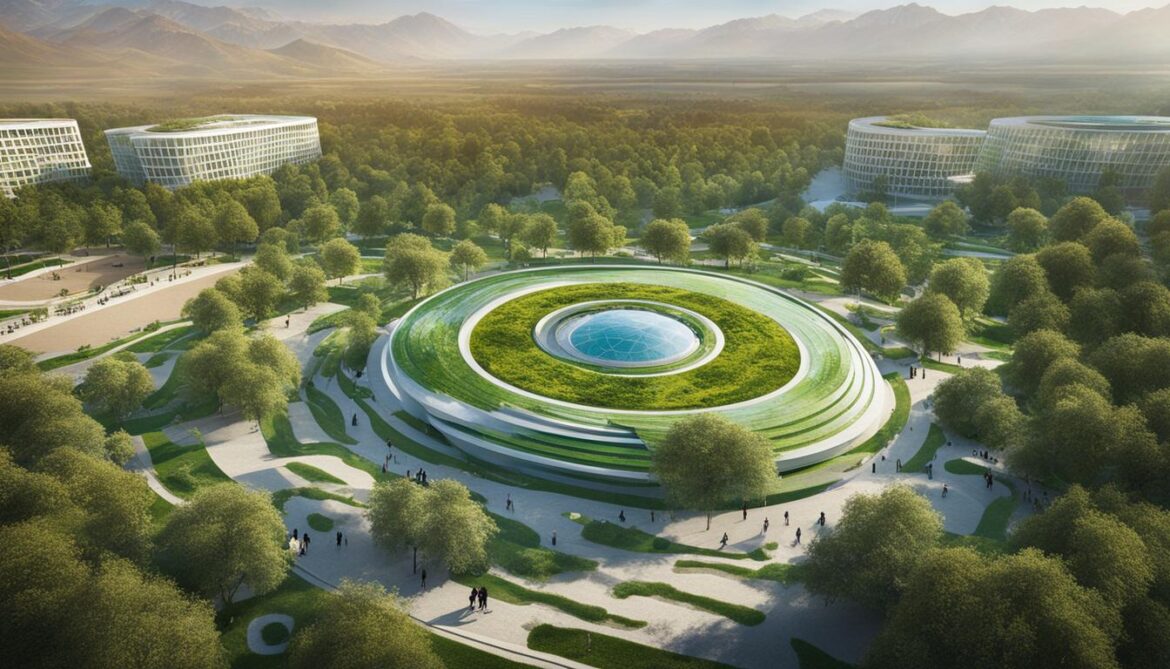
Architectural Marvel: “Samani Tower”
“Samani Tower” stands tall as a testament to the ingenuity of architectural design. Its sleek lines and contemporary aesthetic make it a true marvel that captures the attention of all who see it. The tower’s unique blend of modernity and cultural symbolism perfectly embodies the spirit of Tajikistan’s architectural aspirations.”
| Key Features | Benefits |
|---|---|
| State-of-the-art design | Enhances the city’s skyline and architectural landscape |
| Multi-purpose functionality | Provides a platform for diverse activities and events |
| Efficient use of space | Maximizes available area without compromising on elegance |
| Eco-friendly features | Reflects Tajikistan’s commitment to sustainable architecture |
The “National Unity Square” project and its iconic “Samani Tower” demonstrate the potential for combining aesthetics, functionality, and sustainable practices in the realm of architecture. By pushing boundaries and embracing innovative design concepts, Tajikistan is setting an example for the world.
Energy Efficiency in Tajikistan’s Buildings
The report “Energy Efficient Building Methods for Tajikistan” explores ways to improve energy efficiency in Tajikistan’s buildings. Traditional building techniques like cob and adobe, as well as modern methods like strawbale and straw-clay construction, offer opportunities for better insulation and sustainable living conditions. Improving heating systems with efficient wood stoves is also crucial.
| Building Techniques | Benefits |
|---|---|
| Cob and Adobe | 1. Excellent thermal insulation 2. Availability of locally sourced materials 3. Cost-effective |
| Strawbale and Straw-Clay Construction | 1. Superior insulation properties 2. Renewable and sustainable materials 3. Energy-efficient |
By utilizing these green building materials and techniques, Tajikistan can enhance the energy efficiency of its buildings, reduce energy consumption, and contribute to a greener and more sustainable future. Additionally, adopting Leadership in Energy and Environmental Design (LEED) certification standards can provide a framework for designing and constructing energy-efficient buildings in Tajikistan.
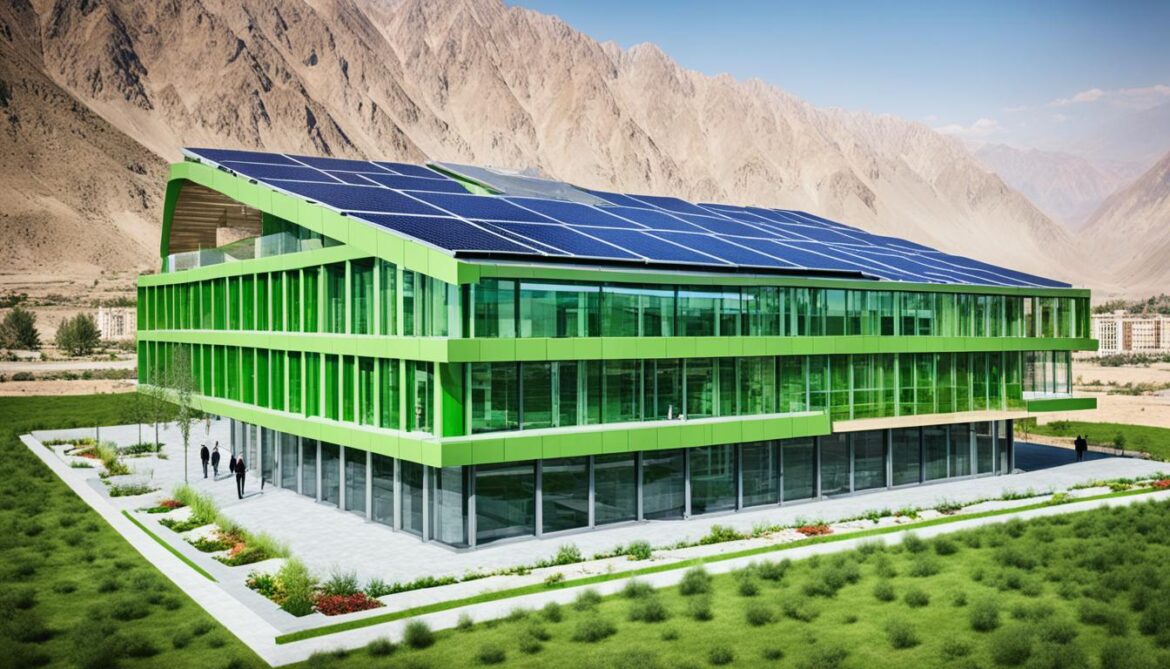
“Energy efficiency is not only beneficial for the environment, but it also cuts down on operational costs and enhances the overall comfort and well-being of building occupants.” – John Green, Architect
Improving Seismic Safety in Tajikistan’s Buildings
Tajikistan is highly susceptible to earthquakes, making the seismic safety of buildings a critical concern in the country. Traditional structures constructed using earth and stone materials often exhibit poor seismic performance, increasing the risk of damage and loss during seismic events. To address this issue, a comprehensive report suggests implementing better construction techniques to enhance the seismic safety of buildings in Tajikistan.
One recommended approach is the use of adobe and cob, building methods that have demonstrated improved resistance to seismic activities. These materials offer enhanced flexibility and durability, enabling structures to better withstand ground shaking. Additionally, strawbale construction combined with a wood structure has shown promise in creating earthquake-resistant buildings. The combination of strawbales, a lightweight yet strong material, with a robust wood framework can provide the necessary strength and resilience to endure seismic forces.
By adopting these construction techniques, Tajikistan can significantly enhance the overall seismic performance of its buildings, minimizing the potential for structural damage and ensuring the safety of its population. Investing in earthquake-resistant buildings is a crucial step towards creating a more resilient built environment in Tajikistan.
Advantages of Improved Seismic Safety in Tajikistan
- Minimizes the risk of structural damage during earthquakes
- Ensures the safety and well-being of inhabitants
- Protects valuable assets and infrastructure
- Reduces the economic burden of post-earthquake reconstruction
- Builds confidence in the resilience of buildings and encourages investment
Implementing earthquake-resistant building techniques is an essential aspect of creating a sustainable and secure future for Tajikistan. By prioritizing seismic safety, Tajikistan can mitigate the potential impact of earthquakes, safeguarding both its built environment and its citizens.
| Key Benefits of Improving Seismic Safety in Tajikistan | Advantages |
|---|---|
| 1 | Minimizes the risk of structural damage during earthquakes |
| 2 | Ensures the safety and well-being of inhabitants |
| 3 | Protects valuable assets and infrastructure |
| 4 | Reduces the economic burden of post-earthquake reconstruction |
| 5 | Builds confidence in the resilience of buildings and encourages investment |
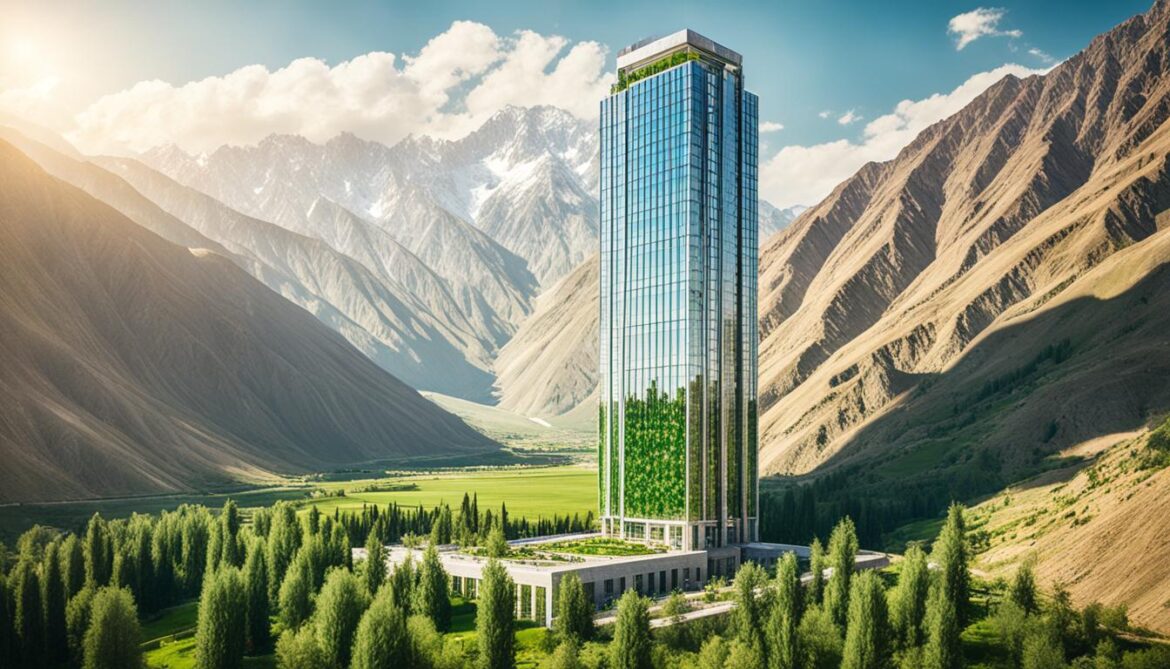
The image above portrays the significance of seismic safety in Tajikistan. By adopting earthquake-resistant building techniques, the country can protect its infrastructure and ensure the well-being of its population.
Enhancing Energy Efficiency in Tajikistan
Tajikistan has an opportunity to enhance energy efficiency by implementing improved building techniques and designs. By focusing on energy efficiency, Tajikistan can reduce energy consumption, lower utility costs, and contribute to a more sustainable environment. Implementing energy-saving structures and energy-efficient design practices can have a significant impact on the country’s overall energy usage.
One effective strategy is outside insulation of walls, which can help to minimize heat transfer and maintain a comfortable interior temperature. Insulated earthen floors are another energy-saving measure that can improve insulation and reduce the need for excessive heating. Additionally, investing in efficient windows and doors with proper insulation properties can prevent heat loss and increase energy efficiency.
Furthermore, energy-efficient stoves can play a vital role in reducing energy consumption. Introducing improved stove designs that burn fuel more efficiently can significantly decrease the amount of energy required for cooking and heating purposes. This not only saves energy but also contributes to cleaner air quality by reducing smoke emissions.
“Implementing outside insulation, insulated earthen floors, efficient windows and doors, and energy-efficient stoves can contribute to reducing energy consumption in Tajikistan.”
The importance of insulation values in both new and existing buildings cannot be overstated. Proper insulation helps to regulate the interior temperature, reducing the reliance on heating and cooling systems. Effective insulation materials and techniques can be applied to roofs, walls, and floors, ensuring maximum energy efficiency and comfort within buildings.
By adopting these energy-saving practices and integrating energy-efficient design principles, Tajikistan can make significant progress towards reducing its energy consumption and building a greener, more sustainable future.
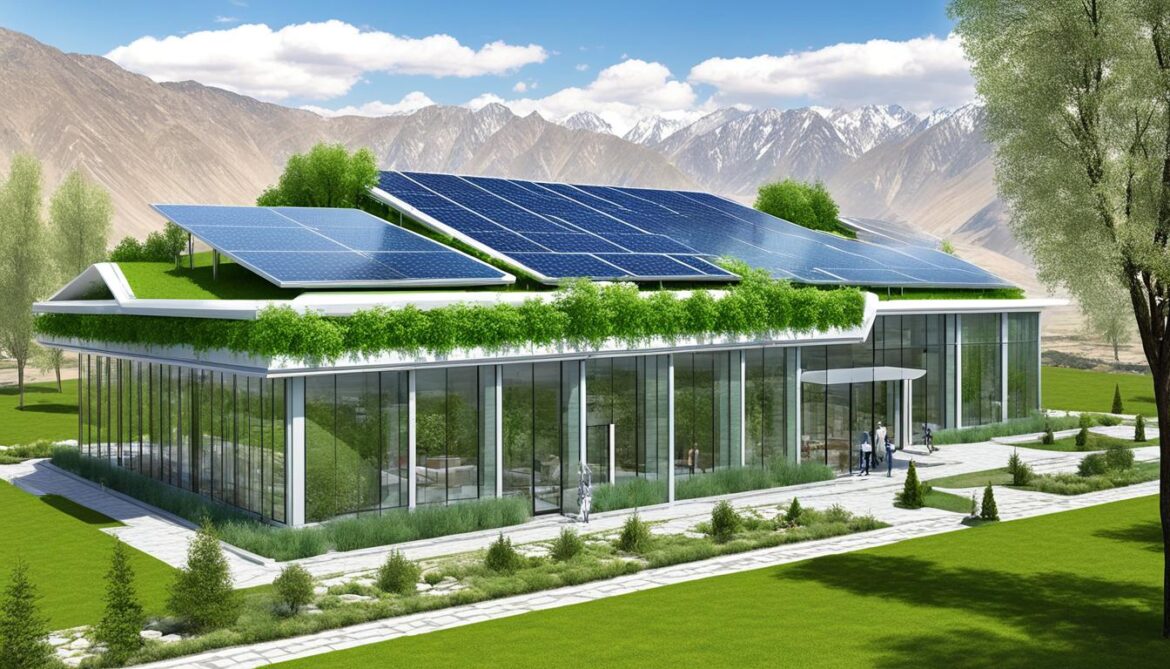
Benefits of Enhancing Energy Efficiency in Tajikistan:
- Lower energy consumption
- Reduced utility costs
- Improved indoor comfort
- Minimized environmental impact
- Enhanced air quality
- Increased energy independence
Conclusion
The development of green buildings in Tajikistan presents both challenges and opportunities. Despite facing economic and infrastructure challenges, Tajikistan has valuable strategies and architectural projects that showcase sustainable development. By embracing energy-efficient building methods and enhancing seismic safety, Tajikistan can progress towards a greener and more sustainable future.
Investing in eco-friendly construction and sustainable architecture will not only benefit the environment but also contribute to the country’s long-term economic growth. By adopting energy-efficient building methods, Tajikistan can reduce its energy consumption and carbon footprint, leading to cost savings and a healthier environment for its citizens.
Furthermore, improving seismic safety in buildings is crucial in a country prone to earthquakes. By implementing better construction techniques and designs, such as adobe and strawbale construction with a wood structure, Tajikistan can enhance the resilience of its buildings and protect its population from the devastating effects of seismic activities.
Tajikistan has a promising future in sustainable development. By prioritizing green building design, investing in energy-efficient technologies, and ensuring the seismic safety of buildings, Tajikistan can continue its journey towards becoming a leader in sustainable architecture and a beacon of environmental responsibility.






